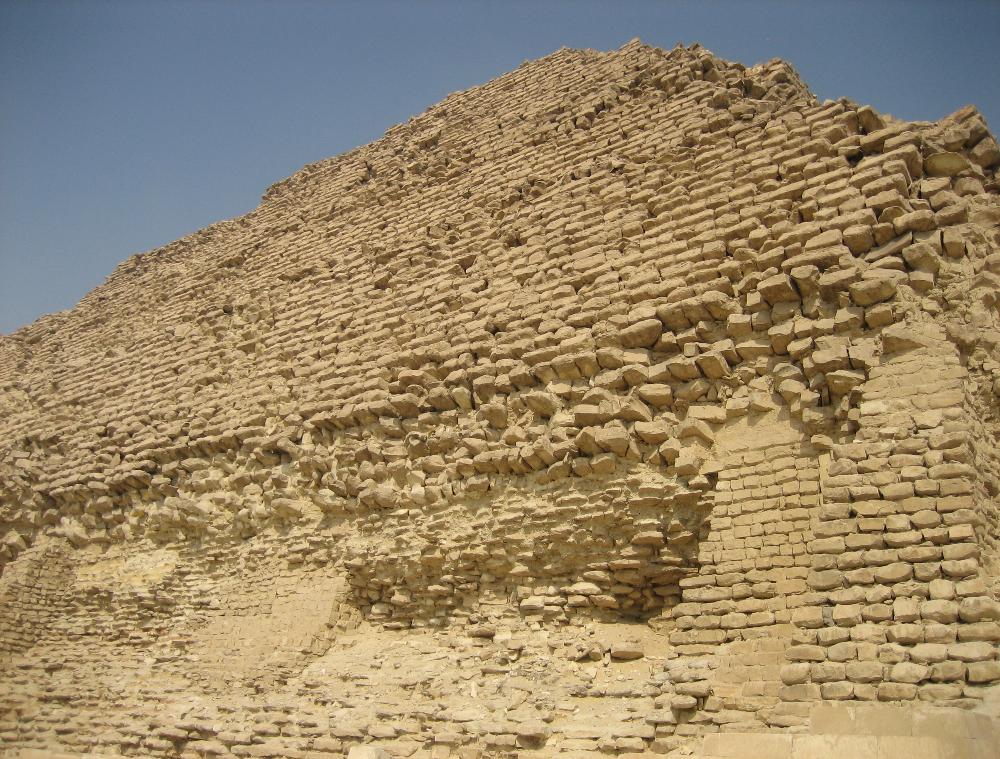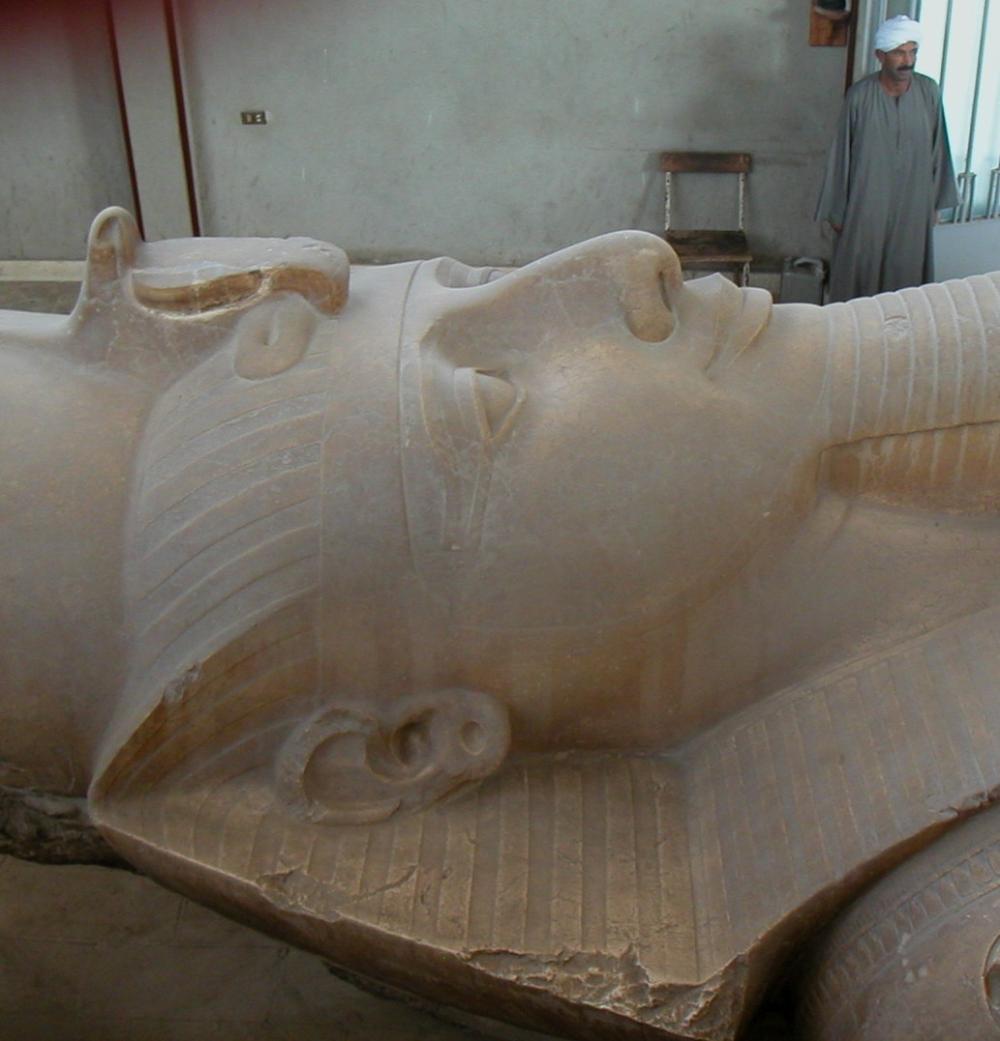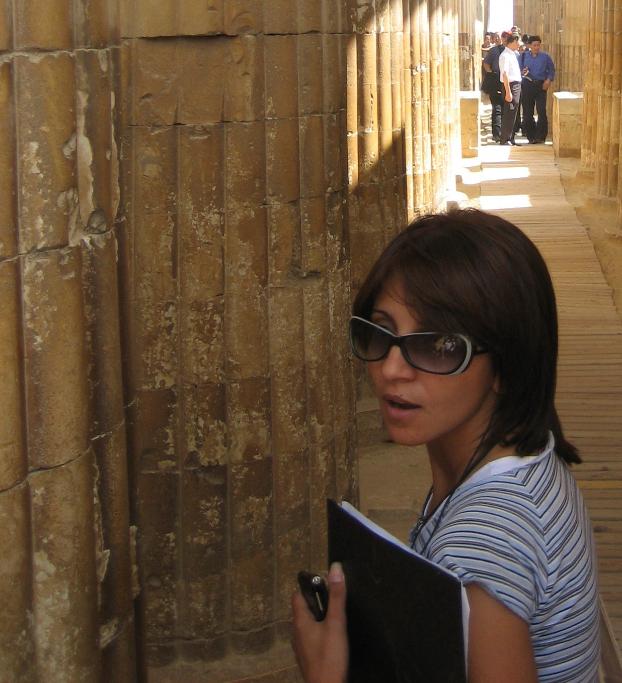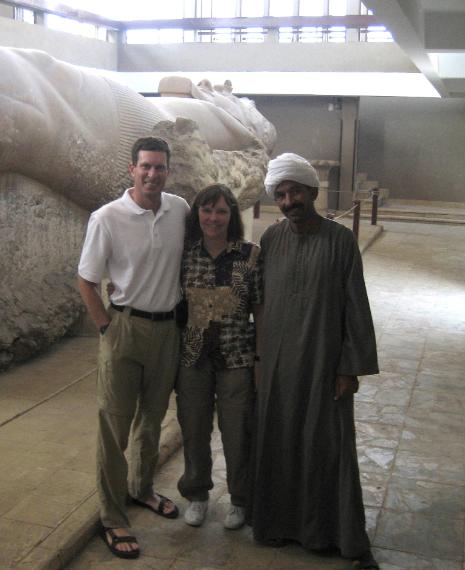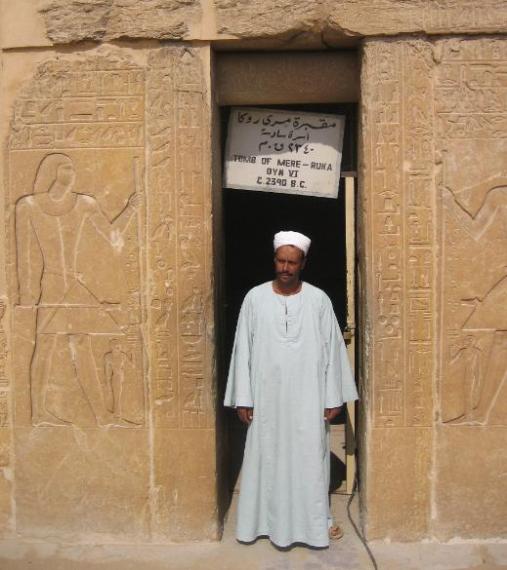

Where We Be
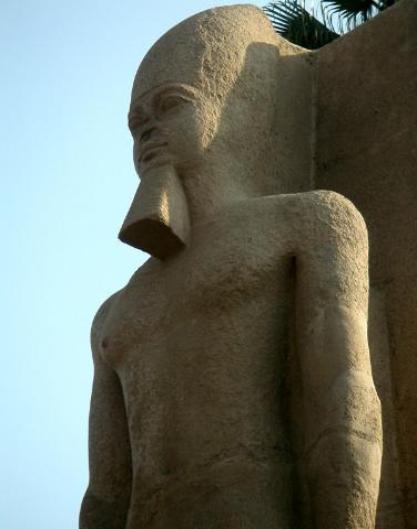
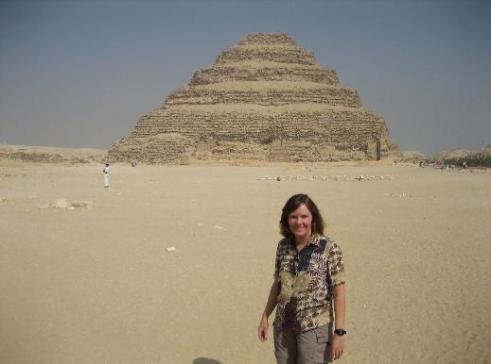
Memphis, now little more than a village with
dusty streets, was once the supreme capital of
ancient Egypt. Most of its ruins have long
since succumbed to the wet soil of the Upper
Nile Delta. What's left to see is an open-air
museum with a few remaining monuments --
two large standing statues of Ramses II, a
medium-sized Sphinx, and smaller statues
covered with hieroglyphics. Still, it's exciting
to stand in the place where an ancient empire
once ruled. Indoors is a colossal prone statue
of Ramses II, hugely impressive even though
its lower half is missing.
The Step Pyramid of Saqqara (also called the
Pyramid of Djoser) is only a short drive from
Memphis but is in a much more desert-like
setting. Here in front of us is the first large
stone structure ever built by man. It’s called
the Step Pyramid because it is built just like a
series of ascending steps, with each of the six
tiers being smaller than the one below. It was
constructed around 2600 BC by the architect
and High Priest, Imhotep, for King Djoser.
dusty streets, was once the supreme capital of
ancient Egypt. Most of its ruins have long
since succumbed to the wet soil of the Upper
Nile Delta. What's left to see is an open-air
museum with a few remaining monuments --
two large standing statues of Ramses II, a
medium-sized Sphinx, and smaller statues
covered with hieroglyphics. Still, it's exciting
to stand in the place where an ancient empire
once ruled. Indoors is a colossal prone statue
of Ramses II, hugely impressive even though
its lower half is missing.
The Step Pyramid of Saqqara (also called the
Pyramid of Djoser) is only a short drive from
Memphis but is in a much more desert-like
setting. Here in front of us is the first large
stone structure ever built by man. It’s called
the Step Pyramid because it is built just like a
series of ascending steps, with each of the six
tiers being smaller than the one below. It was
constructed around 2600 BC by the architect
and High Priest, Imhotep, for King Djoser.
| Memphis & Saqqara, Egypt |
| On the far side of the Step Pyramid, we peer through a hole in a small stone building and find King Djoser peering back at us. (The original statue is in the Cairo Museum.) |
| How big is the stone head of Ramses II in Memphis? Just compare it to the Egyptian man standing behind it. |
| This small Sphinx is located at the open-air museum in Memphis, which was once the immensely powerful capital of ancient Egypt. Our guide wants us to see Memphis and Sakkara first before seeing the Pyramids of Giza since they came first chronologically. |
| Only a few standing statues of Ramses II remain in Memphis |
| You can see the individual stones of the Step Pyramid when you get up close. The smooth-sided Pyramids of Giza would come just a little later during the 4th Dynasty. |
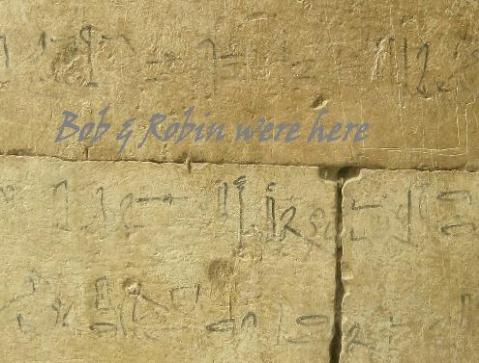
| We add our own graffiti (electronically) to this ancient Egyptian graffiti |
| Egyptian men customarily wear turbans and galabeyas, long flowing robes that reach to the ankles |
| At this nobleman's tomb near the Step Pyramid, pictures of daily life are painted in bright colors on the interior walls -- and are still vivid after thousands of years |
| We're so excited to be seeing the first major pyramid ever built |
| We pass this smiling Egyptian striding past the Step Pyramid during a free half hour of exploration |
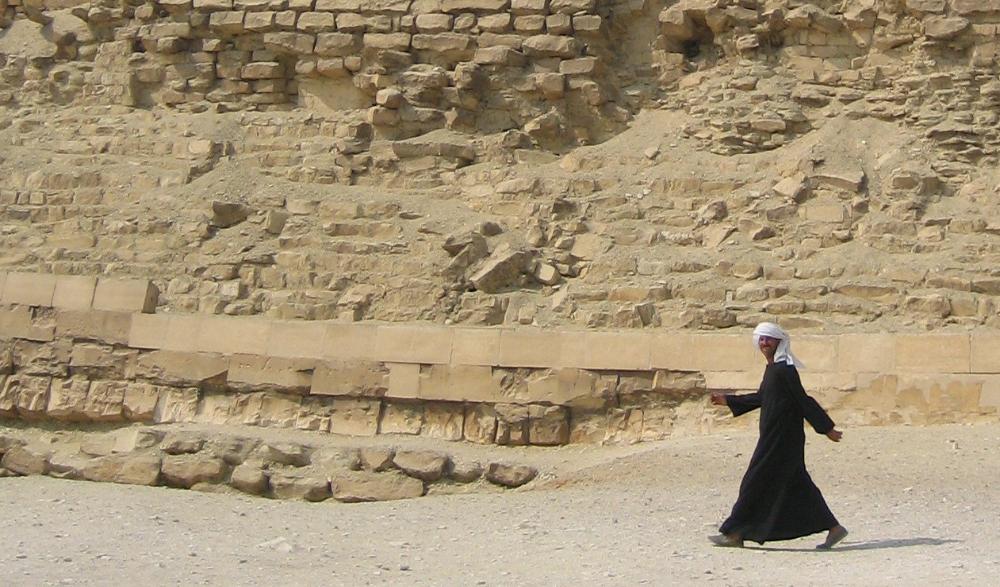
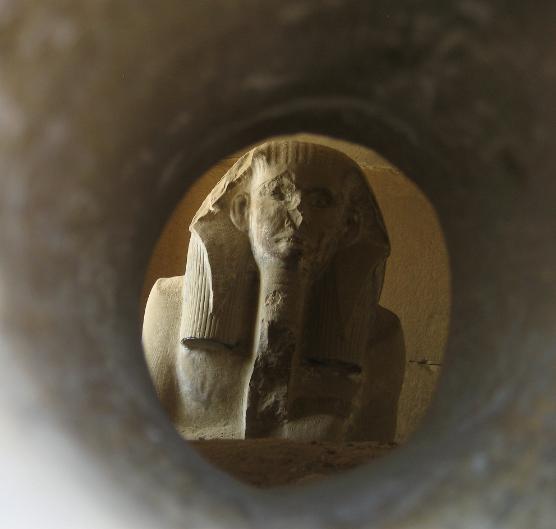
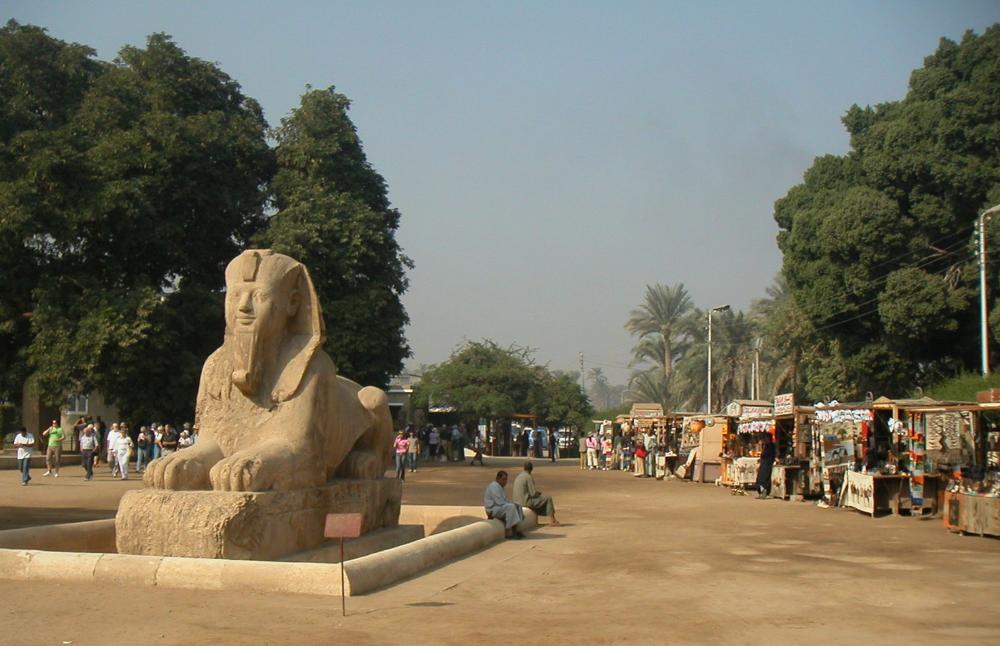

| The Step Pyramid of Saqqara is the first large stone structure ever built by man |
Sally is our guide in Cairo. She laughs easily
and is strong-spirited and outgoing. She is not
at all what we expected of Egyptian women,
who we mistakenly thought would all wear veils
and be, well, on the meek and silent side. But
Sally says what's on her mind and literally shoos
groups of men out of her path when they are in
her way, parting them like Moses parting the
Red Sea. She could easily be American in terms
of her personality and dress.
Sally is a practicing Muslim and takes Ramadan
seriously, not eating or taking even a sip of
water during the entire day until sunset. She
says it helps build patience and gives Muslims
a compassionate understanding of what it feels
like to be poor and hungry.
Well, she must have been hungry indeed by the
end of the day, because before we head down
into one of the tombs, she tells us there's a
restaurant down there! She catches herself
and laughs and says she meant sarcophagus,
not restaurant -- that's how much she's thinking
about the feast that awaits her once the sun
sets, since it’s the last day of Ramadan. After
descending into the tomb on our own, we
report back to her that we saw the sarcophagus
but missed the restaurant.
Of course, not all Egyptian women are as
outgoing as Sally. We do see a few who are fully
veiled, but most wear a scarf over their heads
at most. As our trip progresses, we come to
notice a significant difference between the city
and the country, with city inhabitants tending to
be more Westernized and country inhabitants
adhering to more conservative traditions.
and is strong-spirited and outgoing. She is not
at all what we expected of Egyptian women,
who we mistakenly thought would all wear veils
and be, well, on the meek and silent side. But
Sally says what's on her mind and literally shoos
groups of men out of her path when they are in
her way, parting them like Moses parting the
Red Sea. She could easily be American in terms
of her personality and dress.
Sally is a practicing Muslim and takes Ramadan
seriously, not eating or taking even a sip of
water during the entire day until sunset. She
says it helps build patience and gives Muslims
a compassionate understanding of what it feels
like to be poor and hungry.
Well, she must have been hungry indeed by the
end of the day, because before we head down
into one of the tombs, she tells us there's a
restaurant down there! She catches herself
and laughs and says she meant sarcophagus,
not restaurant -- that's how much she's thinking
about the feast that awaits her once the sun
sets, since it’s the last day of Ramadan. After
descending into the tomb on our own, we
report back to her that we saw the sarcophagus
but missed the restaurant.
Of course, not all Egyptian women are as
outgoing as Sally. We do see a few who are fully
veiled, but most wear a scarf over their heads
at most. As our trip progresses, we come to
notice a significant difference between the city
and the country, with city inhabitants tending to
be more Westernized and country inhabitants
adhering to more conservative traditions.
| Our Cairo Guide |
